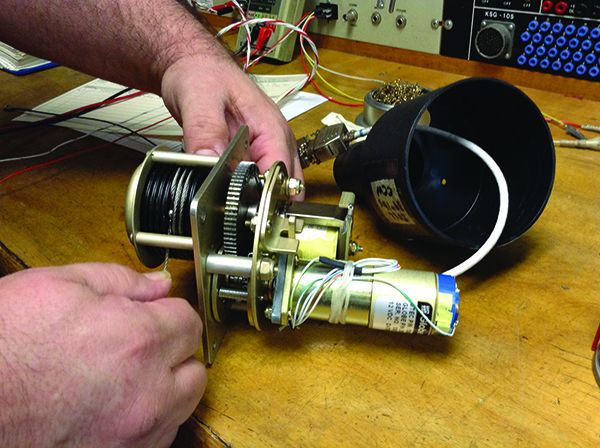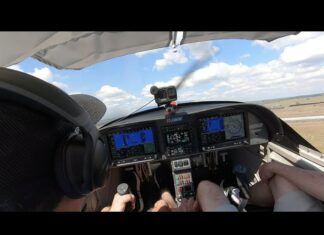This month’s Ask a Tech feature focuses on a frustrating engine vibration problem on a Piper and an S-TEC autopilot issue on a Beechcraft. IA Mike Berry and avionics Repairman Larry Anglisano weigh in. First, an owner with a turbo Arrow chases a rough idling/stalling issue.
“The Continental engine on my turbo Arrow has a rough idle between 700 and 1100 RPM, and then smooths out nicely above 1200 RPM on the ground and in flight. It also has a (possibly unrelated) tendency to cut off at low RPM settings, but only after flight. Start it on the ramp, and it idles fine. When rolling out after landing, it will die if I don’t give it some throttle. Multiple mechanics have looked at the cutoff problem (checking idle settings and fuel pressures) and the only real solution was to increase the idle speed to 800 RPM. That, however, makes the rough idling issue even more pronounced. One mechanic has even suggested the rough idle was caused by a propeller balancing issue. I’m not so sure because it’s smooth at higher speeds.”
If the engine’s fuel pump pressures, idle mixtures and RPM are set correctly, the upper deck reference seals and gaskets are fresh and secure and the fuel nozzles are perfectly clean, then I would suspect that one or both magneto rotors have lost some of their magnetism and need to be re-magnetized or replaced. I’ve witnessed another engine do exactly the same thing. Consider that permanent magnets are not always so permanent when subjected to time, vibration and heat.
Magnetos increase their voltage output with an increase in magneto shaft speed. So the higher the speed, the greater the voltage. It might be worth a check. Also, check the impulse coupling springs to make certain they are not weak or broken, as they can retard the timing enough to cause the engine to quit at lower RPM.
Low unmetered fuel pressure problems can and usually do cause the kind of failure you’re describing, but be aware that the Continental TSIO-360 does tend to idle fairly rough. It loads up easily and spits and pops when other engines seem to idle very smoothly. This is normal and should not be confused with poor fuel/air mixtures. The prop could cause a problem with idle vibration, but generally you will see other operational problems as well. Still, no amount of balance is going to make a Continental 360 engine run completely smooth at idle. It’s just the nature of the beast.
“I have an S-TEC 60-2 autopilot installed in my Beech Bonanza. It’s nav (and GPS) coupled to a Garmin GTN 750 navigator through a Bendix King KCS55A compass system with HSI. The problem is annoying in that the autopilot tracks the localizer (and GPS course when the external S-TEC GPSS steering system is engaged) off course by as much as one dot lateral defection. I can see the pictorial airplane on the map display sidestepping the magenta course line, and even when the autopilot is in heading mode, the autopilot flies the aircraft a couple of degrees off the bugged heading. I’ve learned to live with the heading error by displacing the heading bug to compensate for it, but it’s really troubling when tracking (paralleling, really) an approach in the clag.
My shop told me the autopilot’s roll servo might have to be removed and bench tested to check the start and stop voltages of the motor, but ultimately it probably needs to go back to the factory for repair.”
It might not be a problem in the roll servo. The first and easiest thing to try is a roll centering adjustment—a common issue with S-TEC rate-based autopilots that when out of calibration do exactly as you describe.
S-TEC publishes a roll centering or roll compensation procedure that can be performed without removing any of the components from the aircraft. It can be accomplished in flight, or on the ground, by injecting a nav signal into the connected radio (GPS in your case) by simulating course tracking. The latter is the best way.
If you want to try the adjustment yourself (I’d suggest bringing a safety pilot along), find a day where there is smooth air. The front bezel of the 60-2 autopilot control head has a roll compensation potentiometer that’s set back in the chassis and it’s located to the left of the display. You’ll need a flat-head screwdriver to turn the potentiometer (find one that’s long enough to reach the pot while also narrow enough to fit in the bezel hole).
Tune the GTN to a VOR frequency, center the course pointer on the HSI (and center the heading bug) and engage the autopilot in Nav mode. Wait until the autopilot intercepts the course. If it’s a roll centering issue, you’ll observe the aircraft’s control yoke turning to the direction of the displacement you have been seeing all along. To null it out, what you need to do is slowly turn the potentiometer (you don’t want to make big adjustments—very small increments) until the autopilot servo stops driving the ailerons and the course pointer remains centered. This will be very tedious and you’ll find that you’ll have to physically turn the yoke to center up the controls. Turbulence will make the process even more difficult— if not impossible.
Worth mentioning is that other rate-based S-TEC systems have similar roll centering adjustments, but the potentiometers are in different spots on the control head.
Got a question for Ask a Tech? Hit us up at [email protected] and we’ll help noodle it.


